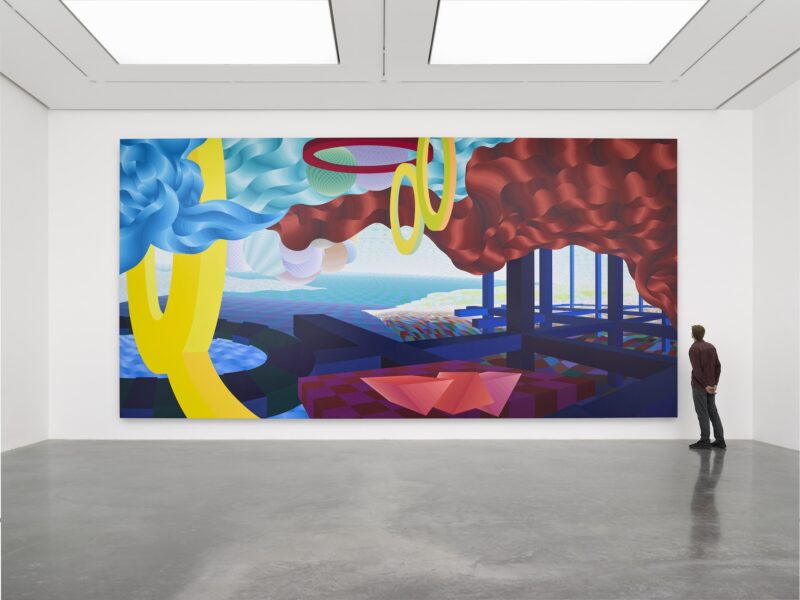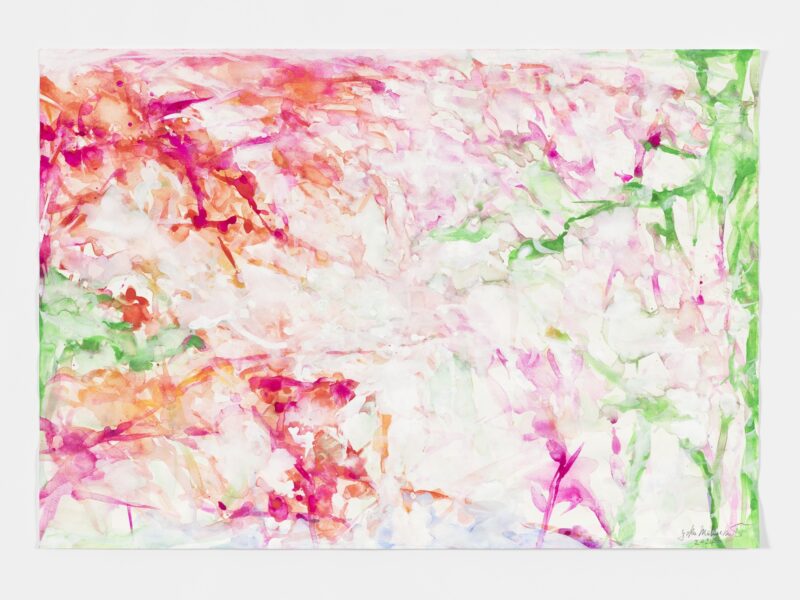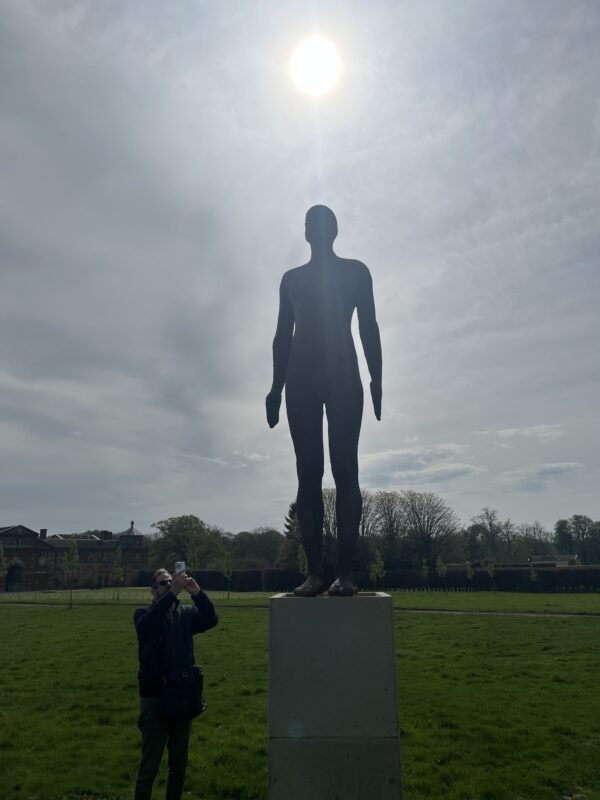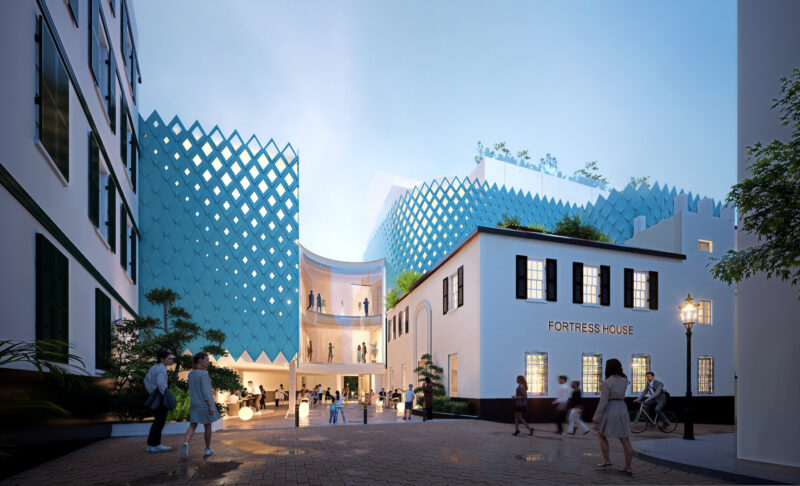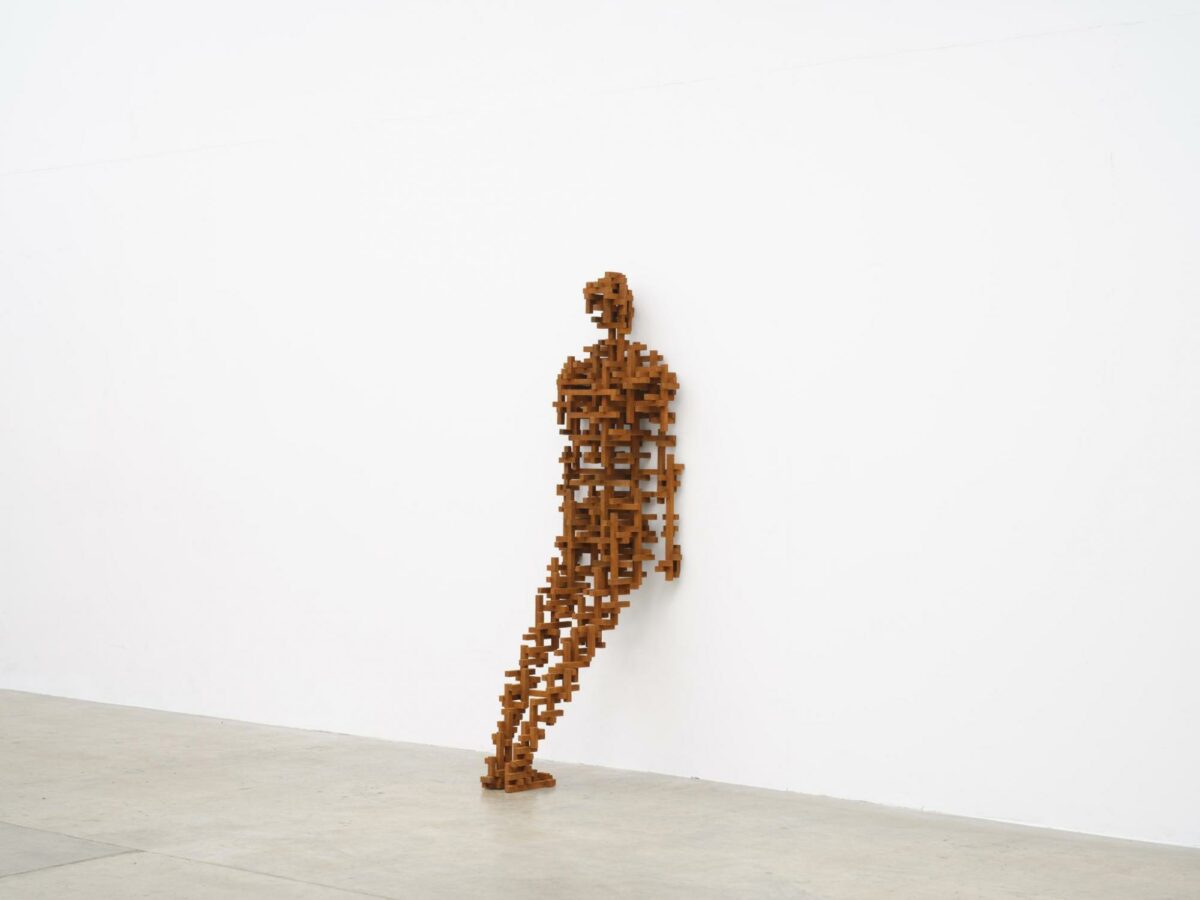
White Cube has announced a major exhibition of new work by Antony Gormley at the Bermondsey gallery in London. Across five discrete bodies of work, Antony Gormley’s ‘Body Politic’ investigates our species’ relationship with its industrially made habitat. For Gormley, this comes at an urgent moment in time when our need for refuge is in dynamic tension with our need to roam: our fundamental migratory nature.
Forming the show’s spine, eight concrete sculptures chart a linear course from the courtyard through the gallery’s corridor. Conceived by Gormley as ‘intimate bunkers for one’, each iteration of Retreat (2022–23) is cast to the scale of the artist’s body in 55 mm thick reinforced concrete. Collectively, the sculptures consolidate, structure and embody a spectrum of body postures – variously balanced, compressed and tensioned. Small square orifices at the position of the mouth offer visual access to a body-sized void within. As Gormley has said, ‘The only place where we can find true freedom is within the infinite darkness of the body available to us once the body is still. These works both evoke and embody the space that we all enter the moment we close our eyes. I consider this the most pertinent and potent space of personal freedom and these works celebrate it.’
Presenting a ‘ground’, and grounded like Retreat, Gormley’s Resting Place (2023) unfolds across the expanse of South Gallery II, conjuring a dense urban landscape. This field of fired clay blocks materialises 243 body-forms as a labyrinthine terrain. We are invited to negotiate this maze of bodies at rest: prone, splayed, foetal, spaced with just enough room for our passage. They evoke a range of situations, from the abandonment of bodies on the beach to the plight of those who have been forcibly displaced by crises of conflict, climate change or resource scarcity. In a forthcoming essay on the exhibition, Teresa Kittler has written that Resting Place ‘also speaks to the broader cultural acceptance of the rights of money, goods, ideas and tourists to travel – a phenomenon accelerated by new technologies – at the same time as national governments control or deny that right to migrants.’
In the North Gallery a series of six ‘Weave Works’ map the volume of the human body. Cast from orthogonal, latticed cast iron bars and exposed to the elements, these rusty sculptures allow space and light to pass through them, creating an illusion of shifting density and bridging sculptural and architectural space. In contrast to the freestanding norms of sculpture, three of the works in Test (2021–23) are propped against the walls of the gallery and the other three touch them, implicating the room as part of the work and making visitors aware of their position within it, as well as their movement inside it.
Within South Gallery I, three thick ribbons of rolled black steel extend from the floor, ceiling and walls, converging in the centre of the room to create a body zone of tangled orthogonal lines. As with Test, Bind (2023) both activates and is activated by the architecture to which it is held. The viewer is invited to duck and dive around this potent three-dimensional drawing.
The final work, Stand (2023), positioned in the 9x9x9 gallery, is made from a Jenga-like stack of Corten steel beams and rises to nearly 5 metres tall. This sculpture acknowledges the entropy of its own construction and the inherent vulnerability of all man-made creations, celebrating sculpture’s capacity to be a focus for hope as well as fear.
Between sanctuary and control, freedom and discipline, ‘Body Politic’ calls upon qualities intrinsic to sculpture – silence, stillness and materiality – to allow visitors to become more aware of their own freedoms of movement and mind.
Antony Gormley, Body Politic, 22nd November – 28th January 2024, White Cube, Bermondsey
To mark the occasion of the show, the forthcoming exhibition catalogue Body Politic is due to be published in December 2023, with a text by Teresa Kittler. In Spring 2024, a solo exhibition of works by Antony Gormley will open at White Cube New York, at 1002 Madison Avenue.
About the artist
Antony Gormley is widely acclaimed for his sculptures, installations and public artworks that investigate the relationship of the human body to space. His work has developed the potential opened up by sculpture since the 1960s through a critical engagement with both his own body and those of others in a way that confronts fundamental questions of where human beings stand in relation to nature and the cosmos. Gormley continually tries to identify the space of art as a place of becoming in which new behaviours, thoughts and feelings can arise.
Gormley’s work has been widely exhibited throughout the UK and internationally with exhibitions at venues including Schauwerk Sindelfingen, Germany (2021); The Royal Academy of Arts, London (2019), Delos, Greece (2019); Uffizi Gallery, Florence (2019); the Philadelphia Museum of Art, Philadelphia (2019); Long Museum, Shanghai (2017); Forte di Belvedere, Florence (2015); Zentrum Paul Klee, Bern (2014); Centro Cultural Banco do Brasil, São Paulo, Rio de Janeiro and Brasilia (2012); Deichtorhallen, Hamburg (2012); The State Hermitage Museum, St Petersburg (2011); Kunsthaus Bregenz, Austria (2010); Hayward Gallery, London (2007); Malmö Konsthall, Sweden (1993) and Louisiana Museum of Modern Art, Humlebæk, Denmark (1989). Permanent public works include the Angel of the North (Gateshead, England), Another Place (Crosby Beach, England), Inside Australia (Lake Ballard, Western Australia), Exposure (Lelystad, The Netherlands) and Chord (MIT – Massachusetts Institute of Technology, Cambridge, MA, USA).
Gormley was awarded the Turner Prize in 1994, the South Bank Prize for Visual Art in 1999, the Bernhard Heiliger Award for Sculpture in 2007, the Obayashi Prize in 2012 and the Praemium Imperiale in 2013. In 1997 he was made an Officer of the British Empire (OBE) and was made a knight in the New Year’s Honours list in 2014. He is an Honorary Fellow of the Royal Institute of British Architects, an Honorary Doctor of the University of Cambridge and a Fellow of Trinity and Jesus Colleges, Cambridge. Gormley has been a Royal Academician since 2003.


